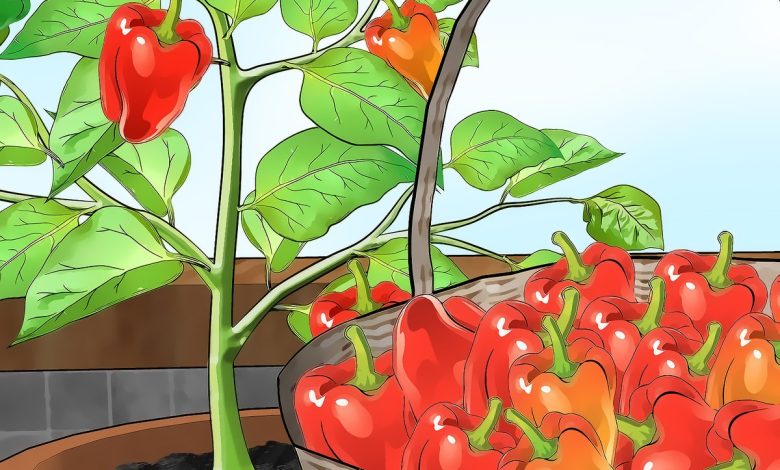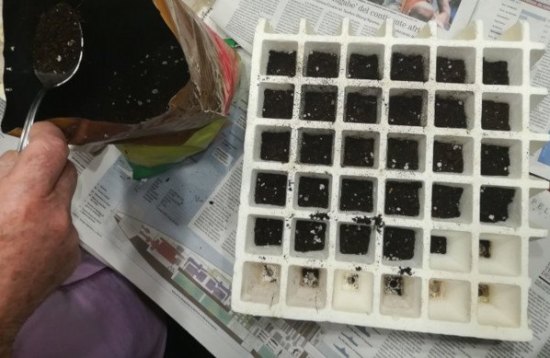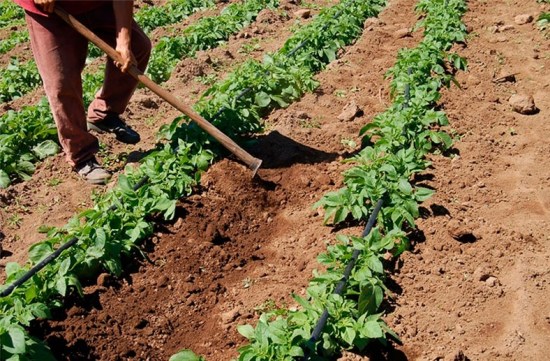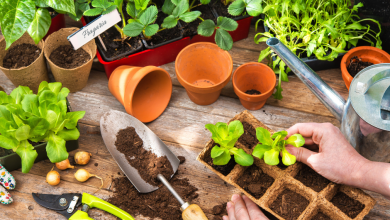How to Plant Peppers at Home. Grow Pepper Step by Step

How to grow peppers at home? How to make seedbeds or when to plant peppers in pots? As in other posts in the « Garden Crops» category, today we are going to answer these questions with some tips to learn how to grow peppers step by step.

First of all, it is important to know the characteristics of the pepper plant and its needs in terms of soil type, climate, compatible crops, etc.
Characteristics of the pepper plant
The pepper plant is a fruiting nightshade (like tomato or eggplant). It is tap rooted, with a main root and a large network of secondary roots, like the tomato, although with a somewhat greater root depth. To grow peppers in a pot, therefore, a large and deep container is needed so that the roots have enough space.
Keep these pepper plant characteristics in mind to plan the best plant associations in growing containers or on beds. For example, other compatible plants can be planted together with peppers , with which these characteristics are «compensated»: plants that, unlike peppers, have a short root system and with another type of use (leaf, root…).
When planning the space, you have to consider that pepper plants are quite large. Depending on the variety, they can reach up to almost 1 meter in height, so it will be necessary to analyze the available space to know how many pepper plants can be planted.
To grow peppers in pots, containers with a minimum depth of 35 cm are needed and the separation between plants will be the same as on the ground (about 40-50 cm between each plant).
Type of Soil Needed for Peppers
Like many fruiting vegetables, the pepper is a demanding plant that requires deep soil rich in humus or organic matter.
To enrich the soil before planting peppers, one of the garden tasks that can be carried out in winter is to dig the ground and bury compost, green manure (remains of pepper plants from the previous year, for example), pine bark or manure,
Another option, when planting the peppers, is to add compost or manure to the hole where the root ball of the pepper is going to be inserted, or periodically add compost, slurry mixed with irrigation or some other fertilizer.
When planning crop rotations, it must also be taken into account that the pepper is a demanding vegetable. Change its position in successive years and alternate it with undemanding crops that do not deplete the soil or that recover it, such as legumes.
Right temperature for peppers
The pepper, like the tomato, is originally a perennial plant, which could be left in the garden for several years bearing fruit after pollination. However, in many places it is grown as an annual (sowing, cultivating for 4-6 months and removing the plant each year). This is usually done in latitudes with cold winters because the low temperatures do not allow the plant to survive: the minimum temperature for its development is 15ºC.
As it is a plant of temperate climate or rather warm, the optimum is a temperature of 20-25º. According to this, in Spain we should prepare the seedbeds in February-March to transplant the pepper plant in spring (April, May… depending on the temperatures in the area).
As you can see, this vegetable needs a lot of sun and heat: you must place it in a sheltered but sunny place.
The pepper is also demanding in water, water generously and keep the soil moist, especially at the time of fruiting, after the flowers appear.
What to plant next to peppers? Beneficial Associations
The peppers in the garden combine very well with some aromatic plants, such as basil. This combination will help the pepper plant grow more vigorous, enhance the flavor of the fruit and prevent certain pests.

The pepper plant also associates well with leafy vegetables such as spinach, lettuce, and Swiss chard, with radishes, or with legumes.
It is not recommended to plant peppers and tomatoes together or with other nightshades, so avoid putting pepper plants together with potatoes or aubergines.
How to make seedbeds and plant peppers
As we have seen, this crop has high climate and soil requirements, so it needs a lot of care compared to other easy crops or plants for beginners.

Instead of planting peppers directly in the final land, it is advisable to first make pepper seedlings and then transplant or plant peppers in the pot or garden bed where we are going to grow them.
In the post How to make a seedbed step by step we saw how to make a seedbed for the garden and Álvaro, in this video about transplanting, gives us some tips for planting peppers and other plants in the garden:
How to take care of the pepper plant?
It is important to prune pepper plants so that the fruits develop better and to better control pests and fungal diseases.
Hilling is another recommended task to take care of peppers. It consists of piling up soil from the substrate at the base of the plant stem making a small mound or a ridge.

The pepper is a bushy plant, so it is advisable to make a trellis with rods and ropes, with metal supports, threads… so that the branches do not bend.

One of the most important tasks in caring for pepper plants and other garden crops is preventing pests and diseases. Knowing what the pepper pests are will help us to be prepared.
In the post on « Pests and common diseases of pepper « we saw the main problems that this crop can present and in the article on homemade preparations to prevent pests and fungi
References
- Zoppolo, R. et al., 2008. Food in the garden. Guide for responsible production and consumption. Edited by the National Institute for Agricultural Research of Uruguay (INIA) in collaboration with the Pan American Health Organization (PAHO).
- Fernándes de Sousa, M. & González de Lena, G., 2015. Horticultural Crop Sheets. Agrifood Technology, nº 16, pag. 10-18.
- Condés Rodríguez, LF, 2017. Outdoor horticultural crops: Pepper. Cajamar Publications Caja Rural. Agriculture Series, No. 25, p. 471-507.

![Photo of How to Plant Pistachios Step by Step: [Guide + Images]](https://www.complete-gardening.com/wp-content/uploads/2022/08/how-to-plant-pistachios-step-by-step-guide-images-390x220.jpg)


![Photo of Capillarity Irrigation: [Concept, Utility, Advantages and Disadvantages]](https://www.complete-gardening.com/wp-content/uploads/2021/06/riego-por-capilaridad-390x220.png)